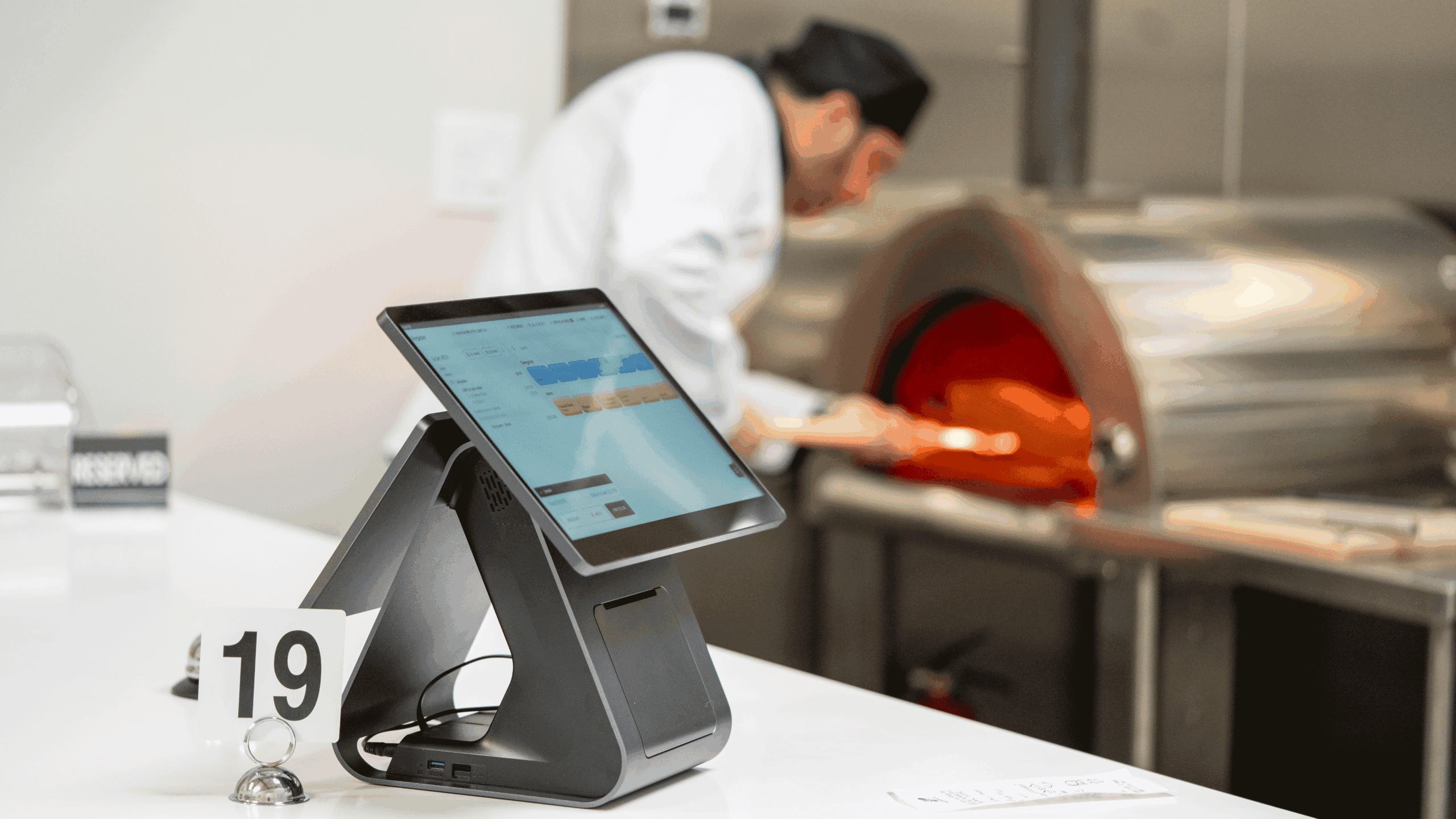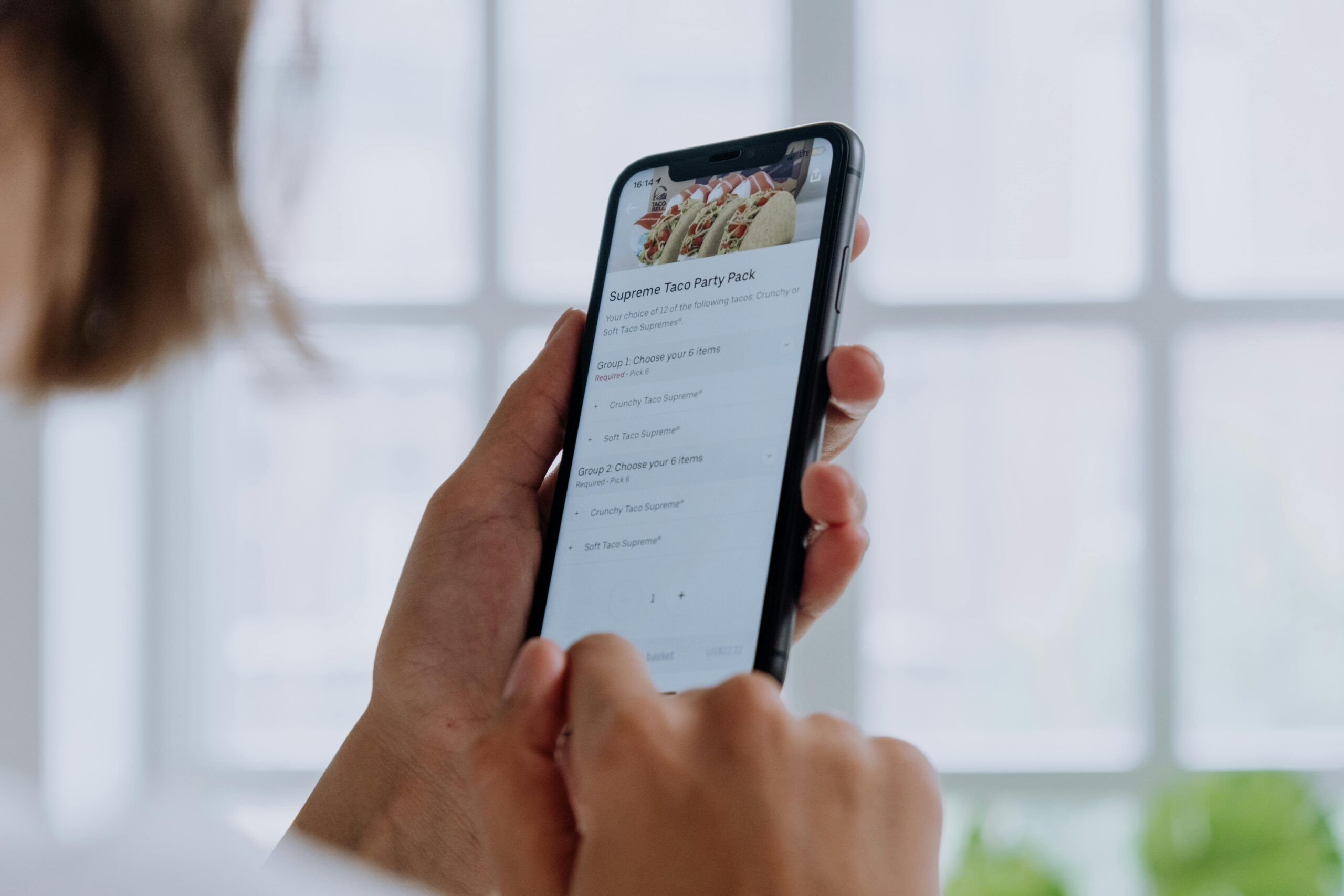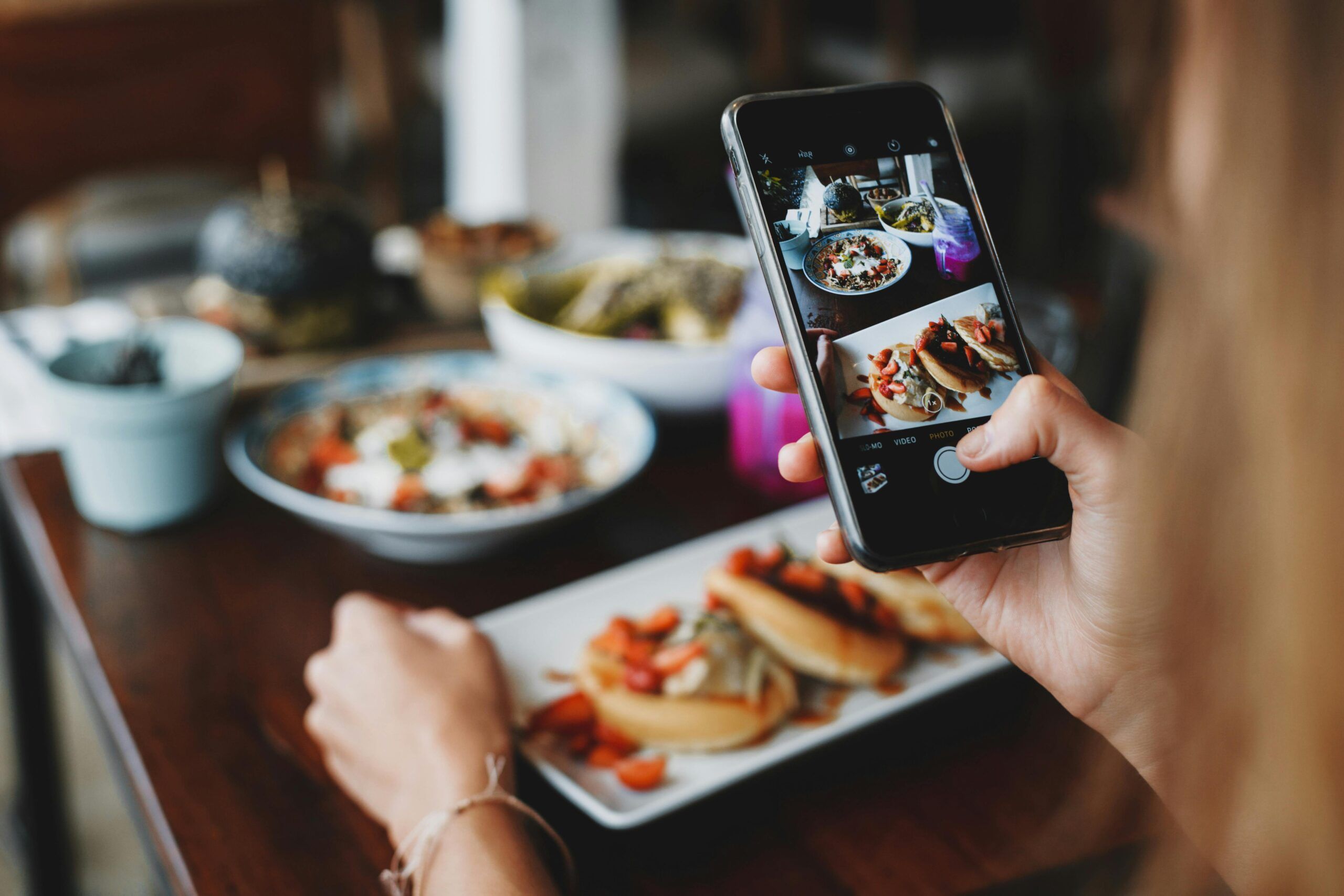- 7 Problems Without Menu System Integration With POS
- Daily Operational Benefits Of Menu System Integration With POS
- Long-Term Business Benefits Of Menu System Integration With POS
- How Menu System Integration With POS Boosts Direct Orders And Profit Margins
- Case Study: How Manorah Improved Operations With POS Menu Integration
- Future Trends In Menu System Integration With POS
- How To Choose The Right Menu System Integration With A POS Provider
- Simplify, Sync, And Scale With Confidence
- FAQ
Restaurant owners today face constant menu updates, pricing changes, and delivery app management. Disconnected systems lead to lost sales, order mistakes, and extra work for staff.
Menu system integration with POS solves this. It connects your menu directly to your POS, keeping prices, items, and availability accurate across all platforms. Orders flow straight to the POS, reducing errors and saving time.
Orders.co combines menus, POS systems, delivery platforms, and online orders into one system. This simplifies daily operations, reduces errors, and helps protect profits.
This article covers how menu system integration with POS works, what problems it solves, and how restaurants are using it to improve daily operations.
Key Takeaways
- Menu system integration with POS keeps menus, pricing, and availability accurate across all channels.
- Orders.co updates delivery apps, online orders, and QR menus from one system.
- Automation reduces errors, saves staff time, and prevents canceled orders.
- Direct orders increase profit by lowering third-party fees.
- Orders.co supports real-time updates, multi-location control, and QR code menus.
Menu System Integration With POS: How It Works And Why Every Restaurant Needs It
In a survey by the National Restaurant Association, 76% of restaurant operators reported making changes to their menu offerings due to supply delays or shortages of food items.
The POS becomes the control center. Any change made in the POS automatically updates menus everywhere: delivery apps, online ordering, QR menus, and dine-in tablets.
For example:
- Sold out items are automatically removed from every channel.
- Price changes update across all platforms instantly.
- Customers always see accurate menus when ordering.
Without menu system integration with POS, restaurants deal with:
- Hours wasted on manual updates.
- Menu mistakes that lead to refunds.
- Inconsistent pricing across platforms.
- Customers placing orders for unavailable items.
With integration, staff update the POS once. Menus stay consistent, orders go directly into the POS, and mistakes are reduced.
7 Problems Without Menu System Integration With POS
Without menu system integration with POS, menu changes require separate updates across platforms. This creates extra work, mistakes, and lost revenue.
Here are the main issues:
1. Menu Updates Take Too Long
Every time a menu item changes, staff have to update multiple platforms one by one. This includes third-party delivery apps, the website, and the in-store POS. With multiple systems, simple updates turn into hours of extra work.
2. Pricing Is Inconsistent Across Platforms
When prices are not updated everywhere at once, customers see different prices depending on where they order. This leads to confusion, lost trust, and potential refunds when pricing is not honored.
3. Customers Order Items That Are Unavailable
If an item sells out but stays active on third-party apps or the website, customers can place orders that cannot be filled. This leads to canceled orders, lost revenue, and poor customer experiences.
4. Higher Labor Costs
Manual updates require more staff time. As staff handle repetitive updates across different systems, their time is taken away from serving customers, managing operations, or preparing food.
5. Increased Order Errors
When menus are inconsistent, the risk of order mistakes increases. Incorrect orders lead to refunds, food waste, unhappy customers, and extra work for staff to fix problems.
6. Lost Revenue from Canceled Orders
Every time an unavailable item is ordered, the restaurant loses money. The cost of lost orders adds up quickly, especially during peak hours when kitchen mistakes create bigger delays.
7. Staff Training Takes Longer
When staff need to learn how to manage multiple systems, training new employees takes more time. Mistakes during menu updates often come from staff not fully understanding each platform.
Daily Operational Benefits Of Menu System Integration With POS
When menus connect directly to the POS, daily tasks become faster, more accurate, and easier to manage.
Menu Updates Apply to All Platforms
Any time prices change or menu items are updated, changes apply everywhere automatically. This includes third-party delivery apps, online ordering systems, dine-in QR codes, and POS terminals.
Fewer Order Mistakes
When menus are accurate across all channels, customers only order items that are available. Orders go directly into the POS without staff entering them by hand. Fewer manual steps mean fewer errors.
Less Time Spent on Menu Management
Instead of updating each platform one by one, staff update the POS once. The system handles the rest. This saves hours every week, especially for restaurants managing multiple delivery apps.
Accurate Pricing Across All Channels
Customers see the same pricing everywhere they place an order. This helps avoid complaints, refunds, and pricing disputes.
Long-Term Business Benefits Of Menu System Integration With POS
Beyond daily tasks, POS menu integration supports long-term growth and improves how restaurants manage key parts of the business.
Better Inventory Control
When an item sells out, removing it from the POS updates availability on all ordering platforms. This reduces canceled orders and improves customer satisfaction.
Easier Staff Training
Staff only need to learn one system to manage menus and orders. With fewer systems involved, training new employees takes less time, and they make fewer mistakes.
Clear Sales Data
With all orders flowing through one system, owners have better data to track which menu items perform best, which delivery channels bring the most sales, and which times are busiest. This allows better planning and decision-making.
Menu system integration with POS gives restaurant owners complete control over menus, prices, and orders while reducing staff workload.
Also, read:
- How Your Restaurant Can Benefit From A QR Digital Menu
- QR Menu Creators Compared: Orders.co vs. Bonee
- The Future Of QR Code Menu Ordering: Emerging Trends To Watch
- The Ultimate Guide To Menu Management In Restaurants: Streamline Your Operations
- 5 Best Restaurant Menu Design Software Options To Elevate Your Online Orders
How Menu System Integration With POS Boosts Direct Orders And Profit Margins
For many restaurants, third-party delivery platforms bring orders but cut deeply into profits. High commissions reduce revenue on every sale. Without direct orders, restaurants lose both profit and control over the customer relationship.
All-in-one menu and POS solutions help bring more orders through direct channels and protect margins.
Keep More Profit from Every Sale
When customers order directly through the restaurant’s website or app, there are no third-party commission fees. With menu system integration with POS, the direct ordering menu always shows current prices and available items. Orders flow directly into the POS system, just like third-party orders, but with no extra cost per sale.
Avoid Refunds and Lost Orders
Direct ordering combined with menu system integration with POS reduces order mistakes. Menu updates apply automatically, so customers only order available items. Fewer cancellations mean more completed orders and higher revenue.
Build Customer Loyalty
Direct orders help restaurants collect customer data like email addresses, phone numbers, and order history. This makes it easier to run loyalty programs, send promotions, and encourage repeat visits. Third-party apps don’t share customer data, but direct orders give full visibility.
Use Promotions to Drive Direct Sales
Restaurants can create special offers, discounts, or exclusive menu items for direct orders. POS menu integration provides that offers are visible across all direct ordering platforms, while third-party platforms stay unaffected.
Protect Margins Long-Term
As food costs rise, protecting margins becomes more important. Direct orders combined with POS menu integration help restaurants keep more revenue per order while reducing operational costs.
Case Study: How Manorah Improved Operations With POS Menu Integration

Manorah Thai Restaurant started using Orders.co before opening. The system helped the team manage delivery orders, menu updates, and dispatch from one place, without extra devices or manual work.
Manorah Thai Restaurant
- Location: Bryn Mawr, PA
- Owner: Jae Cha
- Cuisine: Thai
The Challenge
Manorah opened with a small team of eight people. Like many new restaurants, they faced the challenge of managing multiple delivery platforms while keeping online menus accurate.
Without a connected system, managing orders from different apps would require multiple tablets, printers, and constant updates.
The team needed a way to handle orders and menus without spending hours each day managing technology.
The Solution
Manorah started using Orders.co from the beginning, based on a recommendation. With an all-in-one menu and POS solution, they managed all delivery platforms through one system. Orders.co provided:
- A single tablet to manage orders from multiple platforms like Uber Eats and DoorDash.
- Integrated menu management to ensure accuracy across all channels.
- Unified printer and dispatch processes to simplify order fulfillment.
The Results
After just one month, Manorah saw clear results:
- Faster delivery dispatch after switching to DoorDash through Orders.co.
- Improved organization and productivity across their small team.
- Fewer mistakes and smoother customer experiences.
- Reduced stress for staff managing multiple systems.
Managing your menu across multiple platforms doesn’t need to be complicated.
With Orders.co’s Restaurant Menu Management System, you can easily update, sync, and control your menu across third-party delivery services and your website in real-time. Keep menus accurate, reduce manual work, and avoid costly mistakes.
Future Trends In Menu System Integration With POS
Direct menu updates through POS are becoming the base for new features that simplify restaurant operations. Key trends include:
AI-Powered Menu Management
Some systems now generate item descriptions, suggest pricing, and highlight profitable items, helping owners build stronger menus.
Dynamic Pricing Adjustments
Prices can be adjusted automatically based on the time of day, ingredient costs, or delivery platform fees, ensuring consistent pricing across all channels.
Real-Time Inventory Sync
As inventory changes, sold-out items are automatically removed across all platforms, preventing canceled orders.
Multi-Location Menu Control
Owners can manage menus for all locations from one system, with the flexibility to adjust menus per location when needed.
Consolidated Reporting
Sales data from dine-in, online, and delivery platforms are combined into one dashboard for better decision-making.
Improved Third-Party Delivery Integration
Delivery orders go directly into the POS, menus stay updated, and pricing stays consistent without manual updates.
POS menu integration allows restaurants to manage multiple sales channels without adding daily work for staff.
How To Choose The Right Menu System Integration With A POS Provider
Not all systems offer the same features. When choosing a provider, restaurant owners should focus on what solves daily problems and supports growth.
POS Compatibility
The system must connect with your existing POS or offer support for multiple POS providers. This avoids extra costs and keeps the setup simple.
Third-Party Delivery Integration
Look for full integration with major delivery platforms like Uber Eats, DoorDash, and Grubhub. Orders should flow into the POS automatically.
Centralized Menu Control
Menu updates should happen once and apply across all channels, including delivery apps, dine-in QR codes, websites, and mobile orders.
Orders.co also includes a Real-Time Restaurant QR Code Generation App. Guests can view the latest items, see photos of each dish, and place orders without waiting. This helps avoid delays at the table, reduces mistakes, and eliminates the need for printed menus.

Real-Time Availability Updates
The system should remove sold-out items automatically across all platforms to avoid customer cancellations and refunds.
Consolidated Reporting
Choose a system that combines sales data from all sources into one dashboard for easy tracking of sales, menu performance, and delivery channel results.
Customer Support
Reliable, fast support is critical. Issues with orders, menus, or delivery connections must be resolved quickly to avoid service disruptions.
Scalability
The system should work whether you have one location or many. Multi-location control should allow you to update menus across all stores from one account.
A POS-connected menu system should make operations easier, not more complicated. The right system connects everything in one place and removes daily problems that take time away from running the business.
Simplify, Sync, And Scale With Confidence
Menu system integration with POS keeps menus, pricing, and availability accurate across every channel from one system. Orders flow directly into the POS, menu updates apply everywhere, and daily tasks become easier for staff.
Orders.co connects menus, POS systems, delivery platforms, and online ordering into one simple system.
Want to learn more about how our system can make your business operate smoother?
FAQ
1. What is menu system integration with POS?
It connects your menu to the POS. Any update in the POS applies instantly across delivery apps, online ordering, QR menus, and in-house systems.
2. Why is menu system integration important for restaurants?
Without integration, updates are manual and cause mistakes. Integration keeps menus accurate across all channels with one update.
3. How does Orders.co help manage menus across multiple platforms?
Orders.co’s Restaurant Menu Management System allows you to update your menu once and apply changes across your POS, website, delivery platforms, and QR menus in real-time. This reduces manual work, keeps menus accurate, and prevents unavailable items from being ordered.
4. Does Orders.co support third-party delivery integrations?
Yes. Orders.co integrates with Uber Eats, DoorDash, Grubhub, and others. Orders flow into your POS and menus stay updated.
5. Can Orders.co support multiple locations?
Yes. You can manage menus, pricing, and availability for one or many locations from a single account.
6. How does Orders.co’s QR Code Menu help restaurant operations?
Orders.co generates mobile-friendly QR menus. Customers view items, see photos, and order from their phones, reducing wait times and printing costs.



